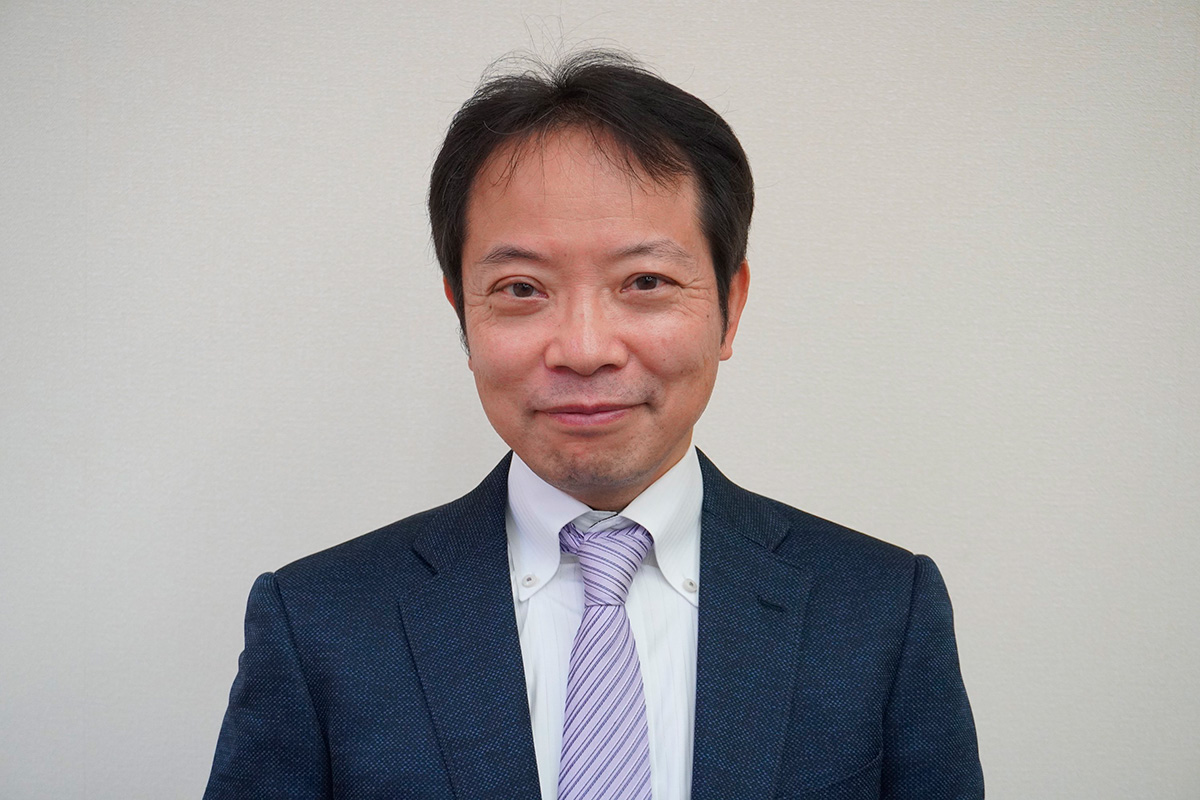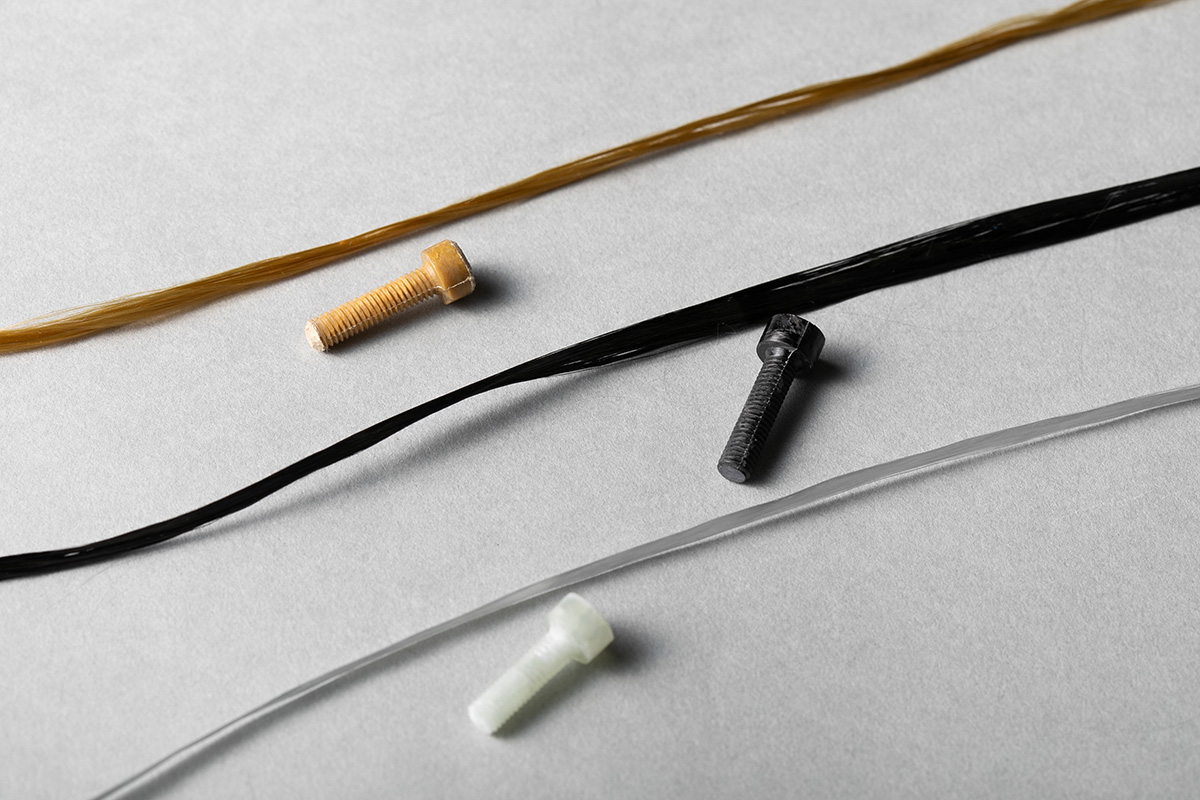Charting the revolutionary journey of CFRP technology: From lightweight bolts to global expansion – insights from Takai's visionary CEO on advantages, challenges, and the road to a century of excellence.

Could you please start by sharing information about one of your recent projects, specifically, the manufacturing of CFRP (carbon fiber reinforced plastic) screws and bolts?
We take pride in being the first company worldwide to develop and introduce machinery for the production of CFRP screws and bolts. These CFRP screws and bolts are renowned for their lightweight and high-strength properties, weighing only a fifth of conventional stainless steel bolts. The development and introduction of these CFRP materials required five to six years of dedicated research and development efforts.
In order to demonstrate the versatility and applications of these CFRP screws and bolts, we featured them in the construction of a CFRP bicycle. This served as a tangible example to showcase how these innovative materials could be effectively used in various products.
What advantages do CFRP screws and bolts offer in comparison to conventional materials?
The utilization of CFRP screws offers several advantages. They are exceptionally lightweight yet possess the strength required for applications like semiconductor equipment manufacturing, which is a primary use for them. Additionally, CFRP screws are highly resistant to chemicals and corrosion. Another significant benefit is their X-ray transmissibility.
Traditional pedicle screws, commonly used in spinal fusion procedures, are typically made of titanium. However, titanium is not X-ray transmissible, which can result in interference with clear imaging on X-rays and MRIs. In contrast, CFRP screws allow for more precise imaging on X-rays, MRIs, and CT scans, contributing to improved diagnostics.
Currently, there is extensive research and development underway to explore the diverse applications of CFRP materials across various fields.
Are there other industries where you're considering introducing these screws and bolts for various applications?
The drawback of these bolts and screws is their cost, as one bolt costs 1,000 yen. When we presented our CFRP bolts and screws at the Tokyo Big Sight exhibition, prominent automakers like Toyota and Nissan expressed particular interest in our products. They are considering using these bolts in electric vehicles (EVs). However, the expense poses a challenge for this application. As a result, we're concentrating our efforts on the semiconductor industry, where these screws and bolts play a vital role in their operations.
Are there any other product types that you're interested in developing using CFRP technology?
Golf clubs, like putters, have conventionally been crafted using aluminum. However, we are presently engaged in R&D to investigate the feasibility of transitioning to CFRP for these clubs.
Could you provide an explanation of the process involved in manufacturing CFRP bolts and screws?
The process begins with material procurement, where we source CFRP and employ various resins. Using our unique technology, we bond these materials with existing CFRP to manufacture our products. We conduct comprehensive testing on these materials, evaluating both their tensile strength, which determines how much they can be stretched, and their rigidity, which indicates their overall strength.
If your products become well-known for their CFRP technology and you scale up production, do you anticipate the possibility of reducing the price of this technology, ultimately making the products more affordable?
Possibly, but the final decision is not made by us; it's in the hands of the raw material procurement company. Acquiring these materials at a lower cost is challenging, and sustaining mass production would also be difficult.
Are you actively seeking partnerships to enhance procurement efficiency or improve sales?
In our R&D efforts, we have formed a collaborative partnership with different plastic manufacturing companies. Collaborating with other CFRP manufacturers has proven to be challenging because their numbers are limited. Currently, there are only a few key players in this space, including Mitsubishi, Toray, and Globe Light. Nevertheless, we actively share information concerning developments in CFRP manufacturing among ourselves.
What sets your production technology apart, giving you a competitive advantage on the global stage?
Our technology enables us to produce a wide variety of products with diverse size and diameter options entirely in-house. There are very few companies in Japan that possess this capability. With such versatility, we can consistently meet our customers' demands and fulfill their specific requirements.
Customers might opt to buy bolts and plungers from China at a lower cost. However, our competitive advantage lies in our commitment to quality assurance, ensuring a longer product lifecycle.

As you develop ball plungers that rely on springs, the trend toward smaller components can make it challenging to detect defects in the springs. Additionally, the choice of materials or coatings may lead to potential overstressing of the spring, impacting the quality of the plungers. How does your company address this issue while developing plungers to ensure the delivery of the best products to your customers?
Our machines are equipped with embedded sensors and quality assurance features. To maintain the exceptional quality of our springs, each spring diameter is handled by a dedicated machine. In total, we have 15 machines in operation.
In your overseas business, you have established partnerships in South Korea and Taiwan. Are you actively seeking additional partners to expand the sales of your products in international markets?
Not at the moment.
The Japanese industry is facing a critical juncture, marked by severe supply chain disruptions over the past three years due to factors like COVID-19 and the US-China decoupling. Consequently, corporate groups are seeking supply diversification for increased reliability. Japanese firms are recognized for their reliability, high-quality products, and advanced services, and they are also benefiting from the weakened Japanese yen. Many observers suggest that this presents a unique opportunity. Do you share this sentiment, and what are the key advantages of Japanese suppliers in the current macroeconomic environment?
Around 10 to 15 years ago, we contemplated the idea of establishing localized production in China. At that time, many companies were shifting their manufacturing operations to China, and the Chinese economy was experiencing significant growth. However, given that our products are relatively small in size, it was not imperative for us to establish production outside of Japan.
Additionally, we encountered challenges in finding reliable raw material suppliers and procurement sources. As a result, we decided to abandon our initial plan to localize production in China during the early stages and instead redirected our focus towards our existing production sites here in Japan.
Given the trend of international firms seeking to diversify their suppliers, are you exploring opportunities to diversify your customer portfolio and engage with new international customers for your product offerings?
Although we are eager to explore opportunities for exporting to foreign clients, our primary client at the moment is Misumi here in Japan. Our products have reached overseas markets due to Misumi's distribution in those countries. We are careful not to overextend our client base to maintain our loyal service to Misumi.
However, we are considering the introduction of our carbon bolts to other countries, such as the United States. We are in discussions about this possibility, and one potential avenue is collaborating with Nabeya Bi-tech, one of our customers, which has a presence in the United States. While this is not a firm plan yet, it's an idea under consideration.
Considering Japan's aging population and the inevitable shrinkage of the domestic market and labor force, with a projected population of below 100 million by 2050, it's evident that the domestic market will have limited growth potential for your company. Given this situation, do you envision expanding overseas in the years to come?
We do have a vision of potentially expanding overseas, particularly with our carbon bolts. However, we do not have a concrete strategy in place at the moment.
As a company with plans to distribute your CFRP products in Europe or the United States in the future, are you actively seeking distributors to introduce these products to those markets?
Expanding overseas would necessitate filing patents in those countries. Before committing to entering those markets, it's essential that we conduct thorough research to assess the feasibility of achieving this. There is a significant amount of groundwork that must be laid before venturing into these overseas markets.
As your company celebrates its 71st anniversary this year, looking forward to your 75th anniversary four years from now, what specific growth goals or personal ambitions do you, as the president, aspire to achieve for the company by that milestone?
First and foremost, I want to express my deep appreciation for the founder of our company and all that he has accomplished, which has led our company to prosper for 71 years. Currently, he serves as the chairman here at Takai. As the CEO, my aspiration is to lead the company to its next significant milestone, reaching our 100th-year anniversary.
I envision fostering a work environment where our employees are highly motivated and possess a sense of independence, thereby reducing their reliance on instructions from senior management. My goal is to pave the path that will guide us to our 100th-year celebration.
0 COMMENTS